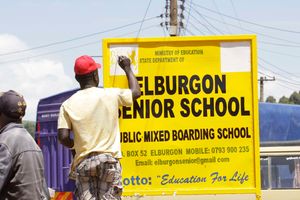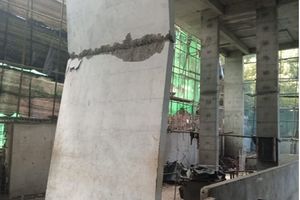Premium
BBI-Azimio bands dedicated to dismantling Constitution
President Uhuru Kenyatta and former Prime Minister Raila Odinga with the BBI documents.
What you need to know:
- The 2018 handshake instigated the Building Bridges Initiative that mutated into Azimio La Umoja.
- A lot of BBI-Azimio bandwidth is dedicated to dismantling the 2010 constitutional dispensation.
The official languages of Kenya are Kiswahili, English and Violence
“Onyo! Onyo! Onyo! Onyo! Bwana Ruto, umekaribishwa Kwetu Gatundu lakini USIJARIBU KUTUSI RAIS! Heshima Idumu!”, read the frenetic hand bills scattered all over Gatundu, Kiambu county.
The style and tone of the leaflets is reminiscent of the oeuvre associated with the dreadful Nairobi Business Community which emerged in the 2017 election crisis, threatening crude incisions on ODM supporters. It is also consistent with a repertory of state-sponsored fear-mongering going back to the early days of multi-party politics.
The genre also aligns with the material deployed to libel the entire Judiciary as wakora, and to defame specific judges in the early sequences of the revisiting.
From its advent, this leaflet culture was understood to be the political vernacular of a state gone rogue. Its crude and malevolent style is unerringly indicative of the political dispositions of the highest offices in the land. From “Multi-party politics would cause ethnic war” and “Kanu will rule for 100 years” to “we shall revisit” and “respect the President”, the leaflet industry has performed its purpose of injecting urgency to sinister political intentions with efficiency.
Leaflets are sufficiently violent to achieve their chilling purposes of ejecting, repressing or deterring individuals as well as groups from a place or course of action. The leaflet industry complements physical violence. It helps, therefore, to examine the current state of the practice of violence generally, and of political violence in particular.
Violent conflict
The 2008 handshake between President Mwai Kibaki and PM designate Raila Odinga inaugurated the never-again which escalated from the National Accord and Reconciliation Act into the 2010 Constitution. If not de-normalised, political violence was considerably delegitimised.
The 2018 handshake instigated the Building Bridges Initiative that mutated into Azimio La Umoja. A lot of BBI-Azimio bandwidth is dedicated to dismantling the 2010 constitutional dispensation and resetting the political equilibrium it established.
But what concerns the most is the re-emergence of violence as the preferred political vernacular of power in the BBI era. Essentially, the handshake and BBI are best understood as a truce framework aimed at establishing a sustainable settlement between parties to a violent conflict.
The question of accountability, which would entail an interrogation of the legitimacy of the uses of violence in the conflict, is overlooked. By implying parity between parties to the handshake, the framework escalates private political violence to a level of equality with official instruments of state violence.
The BBI era also legitimised violence as the operative dialect of political engagement. Arrest, abduction, deportation, dispersal, crackdowns and draconian security operations became preferred means of mobilisation, persuasion and political expression, both in recruiting supporters and engaging rivals.
Leaflet industry
In many ways, official instruments of state violence were privatised to complement quotidian delinquency. The ensuing displacement effect leaves Kenyans prone to impunity as criminals and rogue elements of security agencies assert their predatory propensities at will.
At the core of sovereign statehood is a responsibility to protect. A sovereign who does not protect citizens, according to Thomas Hobbes, commits dereliction of this constitutive mandate, thus ceases to be sovereign and releases citizens from their covenant to obey the sovereign and renounce private violence.
The state’s monopoly of legitimate violence is to protect citizens. Legitimate appropriation of violence by the state translates to greater security, stronger rights and broader freedoms. Due process enters the equation to delineate the boundaries of legitimate exercises of the state’s protective power.
The handshake required the President as the custodian of instruments of violence to engage a private actor on terms of equality in order to “stop the war or “bring peace”. Because the arrangement is fundamentally indifferent to accountability, the Augustinian imperative collapses: “Justice being taken away, then what are kingdoms but great robberies? For what are robberies themselves, but little kingdoms?”
The fact that criminals have to be recruited, and the leaflet industry activated to complement them to assert political interests in Gatundu, in the name of a constituent, who is the custodian of the state’s instruments of legitimate violence, illustrates the depth of our descent from credible statehood into impunity and failure. A failure of justice is always a failure of statehood.
In the BBI era, justice has been marginalised. The BBI’s effective institutional legacy is the de facto amendment of Article 7 (2) of the Constitution to read, “The official languages of the Republic are Kiswahili, English and Violence.”
The writer is an advocate and former State House speech writer. @EricNgeno





